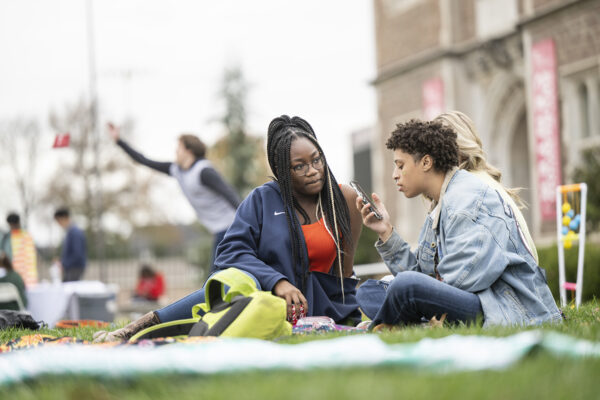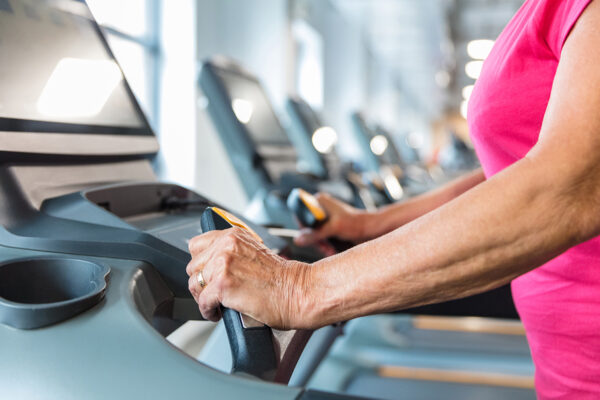The Physical Activity Alliance, the nation’s largest national coalition dedicated to advancing regular participation in physical activity, has released the 2024 United States Report Card on Physical Activity for Children and Youth. The overall physical activity grade for children and youth remained low at D-, the same grade it received in 2022, the last time a report was made.

“The 2024 Report Card offers an opportunity for collaboration among schools, parents, public health practitioners, researchers and policymakers to address the problem of insufficient physical activity, including right here in Missouri,” said Elizabeth Dodson, a research assistant professor in the Brown School at Washington University in St. Louis and one of 16 members of the Report Card Research Advisory Committee.
“The lack of improvement in these metrics since the 2022 Report Card was published should serve as an alert to our community that we need to actively pursue solutions that make daily physical activity a reality for children and teens in our Missouri communities.”
The grade was derived from National Survey of Children’s Health and National Health and Nutrition Examination Survey data that showed:
- Only 20% to 28% of 6- to 17-year-olds meet the 60 minutes of daily physical activity recommended by the U.S. Physical Activity Guidelines for Americans. In Missouri, less than 25% meet these guidelines.
- The proportion of children who meet the physical activity guidelines has decreased slightly since 2016, when these data were first available. (The 2014 report used a different data set.)
The report card synthesizes the best available data from multiple nationally representative surveys to provide a comprehensive evaluation of physical activity among children and youth. It covers 11 indicators, individual state data and recommendations for how grades can be improved. A letter grade is assigned to each indicator based on the evidence. Each grade reflects how well the United States is succeeding at providing children and youth opportunities and/or support for physical activity.
“We have good evidence about programs and policies that work to increase physical activity in kids,” Dodson said. “For example, providing safe ways for walking or biking to school; increasing physical education in schools; and providing safe places for kids to be active in their communities are all things we know will help kids meet daily guidelines for physical activity.”
To make these things a reality, coordinated efforts across multiple sectors and departments are needed, she said.
“This could include local decision-makers, schools, community organizations and members of transportation and parks departments,” Dodson said. “Parents and caregivers can also be powerful advocates for these ideas, helping to underscore the importance of removing barriers to daily physical activity that many of our kids face.”
Findings from the 2024 report card, the fifth iteration of the series that started in 2014, highlight the need for programs and policies to combat the rise in societal factors that interfere with children’s physical activity and healthy development.
The 2014 score was a D- as well, so things have not improved over the last decade.
“Since we’ve had these data available, there hasn’t been a time when all kids were meeting the physical activity recommendations,” Dodson said. “However, these data weren’t being collected prior to experts recognizing an emerging trend of overweight and obesity in youth coinciding with a rise in things that have made it harder for kids to be active, such as the built environment favoring cars, not pedestrians or bikers, and educational demands reducing physical education time in schools, etc.”
“One area I find especially troubling is the increasing use of screens and how few young people are meeting guidelines for daily screen time,” she said. “These numbers have gotten worse, sadly, over the past few years.”
There were certainly times in history when most Americans met current activity recommendations “simply by virtue of how life worked,” Dodson said. “We had no interstate system, fewer labor-saving devices and kids generally spent time playing around the neighborhoods.”
The report card is an advocacy tool that provides accountability and a call-to-action for decision-makers regarding how parents, teachers, health professionals, community leaders and policymakers can implement new initiatives, programs and policies to improve the physical activity levels and health of children and youth.
The Report Card Research Advisory Committee responsible for developing this report card is a sub-committee of the National Physical Activity Plan, an initiative of the Physical Activity Alliance.
Dodson researches ways in which policy can facilitate healthy decision-making around physical activity and obesity prevention. Her work examines the effectiveness of policies in specific settings (e.g., schools or worksites) to increase physical activity. She also studies the policy process, including the use of research evidence by policymakers and the most effective ways to communicate research evidence to policymakers.


